Must Consider Advice for How to Choose a Safari
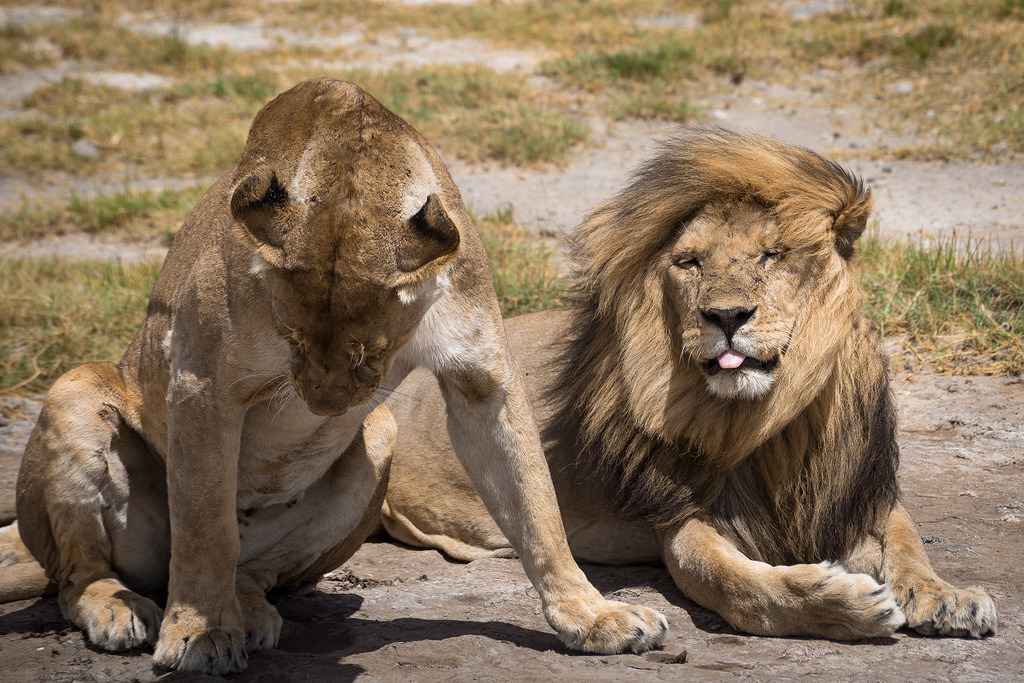
Start researching safari options and you will quickly discover just how massive Africa actually is. From the Great Migration on the Plains of the Serengeti to the drifting sand dunes of Namibia there are a spectacular number of parks and varied experiences to choose from. This rapidly becomes even more complex as you then weigh your budget, seasonality, type of experience and the wildlife you want to see. I’m freshly returned from a spectacular 9 day camping photography safari in Tanzania and am eager to share some of the lessons gleaned from this, and previous safari experiences. I’ve pulled from my own safari experiences across multiple countries, my research, and discussions with the local company, Fed Tours and Safaris, who I partnered with for my recent Tanzanian adventure.
Picking your Safari
Perhaps you already know exactly where you want to go. For most of us though, the first step is figuring out just what type of safari we’re interested in, where we want to go, and what we want to see. So, ask yourself the following questions and then make sure to also catch ‘key questions to ask your safari provider’ which are outlined at the end of this post:
- What animals am I most interested in seeing?
- Which African cultures am I most interested in?
- What landscapes do you like most?
- What time of year will I be able to go on my safari?
- How much safari time can I afford?
- Why do safaris cost what they do?
- What level of comfort do I need?
- What is the core purpose of my safari?
- Do I want a social experience or a private one?
- Is quality of experience or diversity of sights a higher priority?
- What is your level of mobility?
- How much independence is important to you?
- Malaria
- Toilets
- What are your fears?
Which Animals Are A Must?
Safaris from country to country vary widely in what animals you’re likely to see, animal density in the parks, and landscape/climates. If seeing gorillas is a must, then you’re limited to a few specific regions. Similarly, each park has a very different habitat which translates into both different behaviors and types of animals. In some parks you’ll find massive herds of elephants. In others you won’t find rhinos or cheetahs. Similarly, if there’s not much in the way of water, then hippos will be scarce. In other cases, you’ll need to consider seasonal timing as that impacts migration habits – a prime example of this in Tanzania came in the form of flamingos which migrate from lake to lake in December.
Which Cultures Are A Must Experience?
While a safari trip is normally mostly focused on wildlife and nature, the local people and cultures are also a rich and vibrant part of the experience. Africa is home to perhaps the most cultural diversity of any major continent in the world. Most countries are home to widely different cultures with incredibly rich and varied cultural traditions, languages and identities. While it’s possibly to fly directly into and out of a park without ever interacting with the local culture, most of us will opt to spend a few days learning about our host country and its peoples. When choosing your safari consider the tribal groups you’d like to meet/learn more about, as well as the surrounding cities, towns and places to explore before and after your safari. The countries that are home to some of the world’s best safaris are also home to thriving, modern metropolitan centers alive with rich experiences that are every bit as wonderful and inspiring as a safari.
What Landscapes Are Most Enticing?
As with animals, local peoples and culture, another key aspect to consider is what natural views are a must-see for you. Do you want dramatic mountains? Do you want rolling grasslands? Thick jungle or rich forests? Lazy sand dunes? Coastline? Subject to weather, some countries/parks have very diverse landscapes while others are more more limited but provide particularly dramatic landscapes as a result. Honing in on exactly what type of landscapes are most interesting to you is a great way to refine your search and to decide what type of safari itinerary will be best suited to your needs. For Tanzania our 9 days took us through four national parks, each of which had several very distinct zones. However, during a previous trip I took a different approach doing two different safaris, one in South Luangwa (Zambia) and one in Chobe (Botswana) which similarly allowed for even more drastic differences.
What Time Of The Year Will I Be Able To Go?
One of the biggest challenges when booking a safari is timing. While there’s always a fantastic destination for a safari somewhere in Africa, no matter the time of year, timing is significant particularly for wildlife viewing. It’s important to explore when you’ll be able to take your safari and then use that as a way of narrowing in on which experiences will be available to you. Time of year plays a major role in your potential safari destination. If something like catching the river fording leg of the Great Migration is a top priority, you’ll only have a few weeks each year when that is happening. If, however, you’re locked in due to work or school, you can use the periods you have off – let’s say July – to explore which safari parks and destinations are prime. It’s also important to keep geography in mind – the equator cuts through the middle of Kenya and the Congo which puts a large swath of popular safari destinations much closer to the equator than most people expect.
Popular things to consider in addition to migratory patterns are the natural differences that come as a result of dry vs. wet season. For Zambia, we took a summer safari which meant that many of the water sources had dried up and most of the scrub brush and grasses had died under the constant heat. This meant the animals in South Luangwa were more concentrated near water sources and that the underbrush was less verdant making it easier to spot and track the animals. However, burning season in the nearby villages had also started which meant that air quality was significantly reduced. On the up side, it also brought about incredibly vibrant, if slightly obscured, orange sunsets. For the Serengeti, I wanted to catch the animals against more green and richly colored backdrops, which worked well with my December visit that was nestled between wet seasons.
Researching where to go by month is an easy way to narrow in on specific countries and parks to visit. Altitude should also factor into your decision-making as climates are likely far more diverse, even within nearby parks, than you expect. Do follow the advice given, but also don’t be afraid to explore shoulder seasons. Just because a park may be “best” in a given month, does not necessarily mean that’s the only time to visit. Enjoying parks in shoulder season, or off-season can often result in far richer experiences as you bypass availability issues and the annoyance of sharing the parks with a lot of other vehicles. Over saturation is a definite risk in many parks and there’s nothing that destroys the experience more rapidly than having 20 vehicles suddenly show up to swarm around a lion.
How Much Safari Time Can I Afford?
One of the trickiest questions when charting your safari is figuring out just how much time you should set aside for a given safari, park, or experience. This gets even more complex as you battle with questions of cost and vacation length. If you have 2 weeks of vacation your needs and the most appropriate safari experience for you will vary significantly from those of someone who has two months. The great thing about Africa’s safari experiences is that there are options for everyone. My advice is that you consider just what type of experience you want to have, how long you have, and your budget. In some cases you’ll want to consider going to one set base and then doing day trips from that camp, while in others perhaps you move every few days:
Budget Tours and Safaris
There are budget tour companies that provide long duration group trips such as Acacia Tours who use custom big-rigs and provide a camping-driving safari experience for up to 50 days. These safaris offer a wildly different experience than the traditional safari but serve up a very budget friendly build-your-own style experience. Their model is not unlike cruise ships where you buy a basic package, then add on specific experiences as you go. With a base price which can be as low as $60 a day, it’s hands down one of the most budget friendly and social ways to explore Africa and do safaris. The trade-off is that you have a fundamentally different experience than a dedicated, or high-end safari. These are tours first and safaris second and that’s why the pricing varies so significantly from the $300+ per day which is more common for typical safaris. Similarly, you’ll find budget safari vendors doing shorter day or multi-night trips which leverage shared costs and group tours with tighter itineraries where cost per day is in the low hundreds. Obviously, these budget safaris normally come with an experiential cost; over-filled vehicles, tight schedules, much less time on the actual safari drives themselves, and no control over who you’re sharing your vehicle and experience with.
Mid-level Safaris
Mid-level safaris offer a more intimate experience, typically have access to less-heavily trafficked areas, allow you significantly more control over your schedule/itinerary, and have much more nuance than a large budget safari. They’re usually somewhat more confusing to book because good vendors will create a bespoke experience specifically tailored to you/your group and your needs. It’s still possible to do these as part of a shared group, but it’s less common as these vendors realized early on that people have massively different expectations and interests when it comes to what sort of safari experience they want. The needs of a group of birders or photographers is fundamentally different than that of a family with young children.
Mid-level safaris can still be quite budget friend or quite expensive depending on your needs. For my recent 9 day trip through Tanzania I opted for a private vehicle as my primary focus was photography. To offset the cost, and for added access to the parks for early morning and late evening photography, I balanced that by opting for budget camping for my accommodation. Similarly, we discussed which parks to visit and for how long, as well as our route between parks which let us lower the core costs of the trip by reducing or carefully prioritizing our route based on park fees which are quite high in Tanzania. All of this was only possible due to the flexibility of my itinerary and the knowledge of the guide and company I was working with.
Luxury Safaris
This is what most people envision when they hear the term safari. Luxury safaris are often quite similar in many ways to mid-level safaris only with an added level of luxury layered on-top. They often include luxury accommodation, even when that accommodation is “camping” based, a higher service level, more staff-on-hand and a different approach to food and drinks throughout the safari experience. In many cases, you get less-access to the animals because of the need to partake in many of the added experiences such as sundowners or a nice breakfast but that’s offset by having premium guides, newer vehicles and in some cases more choice lodge locations.
As with the mid-level safaris, these tend to be highly bespoke in nature, meaning customized heavily to people’s needs. In some parks or areas of parks, expensive licensing or caps on the number of active vehicles at any given time can also result in heavily beneficial conditions for a richer experience. For our safari in South Luangwa, the company we were working with was one of two licensed to have camps located deep within the park. The end result was that in the 6 days we were on safari, we only rarely saw other vehicles and at that, there were never more than 1-2.
Why Do Safaris Cost What They Do?
With the average mid-level or luxury safari costing between $300-1,200 USD per day, per person, they’re not the cheapest experience in the world. The cost of a safari also tends to vary significantly from country to country. Part of this has to do with the inherent cost of equipment as the wear and tear on safari vehicles is significant combined with the vehicles themselves being quite expensive. Beyond that though, individual countries and parks have very different approaches to the fees they charge. It’s also one of the challenges when looking at pricing, as the larger the vehicle and the more people crammed into it, the more fares splitting these fees. As a solo-fare that $100 per vehicle entry fee has a greater impact than $150 split between 8 people. The cost of food supplies that have to be brought into the camps is also high. Other factors include the variety of amenities you get over the course of the safari – but more on that later.
What Level of Comfort Do I Need?
One essential question to ask yourself is just what type of experience you want. If the thought of a cockroach freaks you out, or you’re more in the mood to relax in a comfortable bed with a view out over grazing elephants, then it’s worth being upfront and honest about that from the get-go. If you’ve never been to Africa before, keep in mind that it’s very likely significantly more developed than you’re visualizing. Be very honest about your comfort zone, what you’re concerned about, and what you might want to try but have fears about. Then, use that you shape what type of experience you look into and provide that information to the safari vendors you reach out to.
What Is The Core Purpose Of My Safari?
Similar to exploring what your need and preference is for level of comfort and luxury, be very clear about what your priorities and goals are with your safari. Is this a get-away vacation that will focus on relaxation and then include periodic outings to see a few wild animals? Is it a full-on adventure driven adrenaline mission? Are you going birding? For photography? Establish your top priorities and then you can shape your experience around them. As a travel photographer, my safari experience is focused almost completely on getting out with the animals for as long as possible in as many backdrops as possible and with as few people around as possible. That meant I needed to be able to leave at 6AM or earlier every morning, a full hour/hour and a half earlier than most of the other vehicles. It meant that I needed to be able to take longer game drives to get me into less-frequented areas and that I be able to spend an hour and a half waiting for an animal to wake up from its nap if needed. It also meant that I needed to have more buffer time in my schedule in case we ran into bad weather or I didn’t find the shot I needed in one of the parks. I also needed a driver/guide who was able to get me straight to the animals, position the vehicle, and support my photography without me having to explain exactly what I wanted every time at length which would have cost me a lot of the best shots. Long story short? Not all vendors are good at all things. So, know what you need, then ask directly, and tailor your research to learning about the best places, guides, and options for that type of trip.
Do I Want A Social Experience Or A Private One?
As my regular readers will know, I ordinarily travel solo. In many cases, I find this actually leads to a more social experience as I do hostels and similar group activities. In this instance, for the reasons mentioned earlier tied to photography, logistics, timing and price, I opted for a solo safari. One of my concerns was that 9 days with just my guide and the chef would be painfully isolated and quiet. In this case, my concerns were completely unjustified as I found myself utterly entertained and consumed by my daily routine and activities. But, for those who are perhaps more inclined for a more social experience there are a wealth of options. Everything from private safaris with your group/family/partner, to shared but still more intimate safaris, all the way up to the 20+ person chuckwagon styled cross-Africa trips offered by groups like Acacia and G Adventures. With options available for every type of preferred experience, consider just how social you want to be and use that to further chart the type of experience you opt for.
Is Quality Of Experience Or Diversity of Sights A Higher Priority?
During my recent trip I spent 23 days in Tanzania and Zanzibar. Had I done a different itinerary and style of trip I could have feasibly seen four or five additional countries during that period. For this trip I decided I wanted to deep dive into Tanzania and I wanted to be able to dedicate just under half of my trip to my safari. That let me immerse myself in the country and really get maximum quality of experience out of both the exploration of the culture and the safari.
How? By having extra time, such as my 4 full days in the Serengeti, which meant I could risk spending the time to search for elusive cheetah or sit and watch a leopard lazily enjoying a sunset. That added ability to take my time and not to rush it was paramount for this trip, but that was also in part because I had previously done other safaris. My priority this time wasn’t seeing the big five, it was spending time with them and immersing myself in the landscape as a whole. So, where on a previous trip I’d have raced from animal to animal, park to park, and country to country to get a taste of them all – like a quality meal, I opted for a smaller portion but prepared with more care and enjoyed in a more focused way with ample time dedicated to the task. Still, it’s not entirely fair to say that I opted fully for one in favor of the other, as I still chose to split my 9 days across four nearby parks vs. spending all 9 in one location. Ultimately, the duration of my safari and where I went came down to evaluating and then deciding just what my needs and expectations were for this trip.
What Is Your Level of Mobility?
Are you ready to climb Mount Kilimanjaro? Can you do afternoon bush walks? Do you have minimal mobility and largely need to stay in the vehicle? Picking and choosing your mobility is a core consideration when charting what type of safari experience is best for you. A camping safari with public restrooms 20 meters away is fine if you’re fully mobile. If mobility is a bit more of a challenge, then perhaps something seemingly as small as an in-tent or ensuite bathroom at your lodge is a major factor in how you enjoy your safari. Consider your mobility when evaluating what type of safari you want to do – that trek to see the gorillas may be prohibitive just as a potential bladder condition might make a more developed park a more comfortable potential option for you.
How Much Independence Is Important To You?
The larger the size of the safari and the more different groups of people attached to it, the less independence you’ll have. Similarly, the less time you have on-safari, the less flexibility you’ll have, which means reduced potential for making independent decisions. While this is usually not a huge issue, it can be a painful experience spending all morning searching for large lions only to find them and to have a few minutes with them before having to leave due to time limits/a fixed itinerary, or other people in your vehicle who are impatient.
Another dimension of this is how your safari is scheduled as you negotiate the terms of your day-to-day and daily schedules. Do you have the possibility to stay longer in one location if something changes? To stay less time if you’re disinterested in a park or location? On a daily basis, are you confined to very strict schedules such as one daily game drive from 7:30-10:30AM and one evening game drive from 4:30 to 6:30PM or can you opt for earlier departures (6AM) or all day safaris chosen on a day-to-day basis?
Malaria and Malaria Tablets
Not all areas at all times have malaria. However, it is somewhat common in many of the countries where you may want to go. It’s worth taking the extra step of adding anti-malarials as a natural part of your preparation package. The key thing you should know is that while still legal, Lariam /Mefloquine should be avoided under all circumstances. The drug has been linked to a large list of psychological issues and can cause permanent damage in addition to being suspected for many of the mental breaks US troops have experienced while deployed.
The best anti-malarial is Malarone which has a completely different chemical composition from Lariam and no psychological side effects . The one side effect Malarone may have which isn’t on it’s overall list is a general sense of mild nausea. This could have a mild impact on your diet.
Is it still worth taking malaria medication? Absolutely. While I’ve avoided catching malaria in my various trips, numerous friends have been unlucky enough to contract it and they, without fail, describe it as one of the most unpleasant experiences they’ve ever run into. As it’s something relatively easy to avoid, do take the extra precaution to protect yourself and the trip – after all, it’s a bit like travel insurance, as it would be a shame to miss a week of a 2-week long trip while being ill because you saved $80 in anti-malarial pills. Be sure and check with your local physician as you will need to start the medication a week or so before you enter and continue it a week or so after you leave the infected area. As an aside, you should also check and see if there are any particular vaccinations that are required or suggested for your country of destination.
Toilets and Stomach Issues
One of the things that many people express fear and concern about is what the toilet situation will be like during their safari. It was a concern I shared. Luckily, the pit latrine and squatting hole toilets of the past are increasingly less common and almost always accompanied by a western toilet. Even during the camping safari I was on, the toilets throughout the Serengeti, Ngorongoro Crater and Tarangire National Parks and campgrounds all included at least one European toilet. You can learn more about the topic in my post reflecting on some of the fears I had after my previous trip to Africa here.
What Are Your Fears?
This is one of the final questions to ask yourself while preparing for your safari. Simply put, a trip to Africa and going on safari is quite the adventure. Often we make ourselves far more nervous than need be by burying our fears or being embarrassed about them. Make a complete list and index everything that makes you uncomfortable. Then review it, investigate, and even more important, pass along a lot of those fears to your safari organized/guide/company. They have the information and knowledge you need and believe me, they’re familiar with all sorts of odd questions. Think of them a bit like your doctor. They’re used to it and a major part of their job is helping you have a successful and safe trip.
Essential Questions To Ask
- Gas budgets
- Start and stop times
- Vehicle permit density and Park size
- Driver experience
- Transit times
- Lodging locations and proximity to the park
Gas Budgets
Not all safari companies are created equal. One of the key ways many companies cut costs are by having fixed gas budgets and limiting their drivers. The less driving you do, the more money they save. They reduce fuel costs when they can keep you sitting in one place on an animal and the more they can limit the distance traveled to respond to an “animal spotted” call on the radio. While you’d think this was limited to the more budget-oriented companies, it’s often equally true of major safari companies and luxury vendors. It’s also a strong argument for using smaller vendors over larger companies operating fleets of safari vehicles and guides, who need to control cost across the board. There’s nothing more unfortunate than missing out on incredible animal sightings simply because the guide’s not allowed to spend the gas to get you there. Keep in mind, the animals move around and it takes good tracking and driving to find them. It is a very frustrating practice when you consider that often you are paying $400 or $800 dollar per day for your safari and that the experience is being diminished to save $5 in fuel.
Start and Stop Times
Another key consideration is the proportion of time actually spent out driving and searching for animals. During my recent safari with Fed Safaris, we discussed that as a photographer I wanted to make sure I caught sunrise and as much of the sunset as possible. That meant early departures and late returns on almost all of our excursions. By agreeing to this, I gained an extra hour to hour and a half per-morning that I wouldn’t have had if we’d followed the normal itinerary. We also stayed out longer during the day and periodically did full-day safaris. Over my 9 days, I estimate that these differences led to around 10 hours of additional safari time in-vehicle that I’d have missed out on if I opted for a more traditional schedule. To be clear, for many people, the later start time and shorter game drives are perfect for their needs and the experience they want. However, it’s worth knowing when you request your quote just what type of options are available keeping in mind that what may look like two nearly identical safari companies may vary significantly on actual in-vehicle time and how flexible they are on the experiences you can choose. Why? Because as mentioned previously, the more time you spend in-vehicle the more wear and tear on the vehicle and the more gas being consumed.
Vehicle Permit Density and Park Size
Hinted at earlier, there are few things more disappointing than ending up sighting an animal only to have a veritable convoy of safari vehicles descend on the spot all jockeying for position. In some major parks, in the central and most frequented areas, during peak season, it’s possible to have as many as 30+ vehicles viewing animals. Not only does this dramatically reduce your enjoyment of the moment, it also destroys many photography opportunities and is generally unpleasant for a host of other reasons. One great way to avoid this and minimize its occurrence is to research park density, how many permits are issued, how expensive park costs are, and what steps are taken to reduce the probability of these types of situations occurring. Of course, also being able to move outside of the areas of the park purely frequented by short-duration safari drives and day-trips is also a great way to minimize the likelihood of this happening.
Driver/Guide Experience
You want a guide that knows the park and has been well trained in the animal’s behaviors and routines. A good guide knows exactly where certain animals are likely to be, their territories, and likely knows some of the animals by defining characteristics – particularly big cats. While it’s impossible for guides to guarantee sightings, there’s a fundamental difference between a guide who knows the park, knows the animals and knows the landscape as well as which animals will be where at what point in the day – and those who don’t. Sighting animals is a combination of skill and luck. While most guides are well trained, it’s something you want to double check as it can have a drastic impact on how much you see over the course of your safari.
Transit Times
Getting from Point A to Point B is often time consuming. While it’s less of an issue if you’re doing a single camp/single destination safari, don’t underestimate just how much time transit can consume. Navigating Africa’s remote roads often takes longer than you’d expect and gravel park roads can take a significant amount of time to traverse. Take into consideration just how much road-time your itinerary will require and plan accordingly. I ran into a number of people who spent a majority of their safari experience driving to and from the different parks which meant that – yes, they saw a lot of different parks – but at the cost of actual in-seat safari time in those parks.
Lodging Locations and Park Proximity
As an extension of asking about transit times, also take into consideration the location of your lodging. In some parks it’s common for accommodation to be placed outside of the national park near the entrance. While this makes obvious sense, especially for more luxury options, it also means that you have significantly more transit time before you’ll be able to get to the animals. Depending on what type of safari you want, that may not be an issue and the trade off might be well worth it. But, it’s an important thing to be very clear on and establish before booking. For my safari experiences I was more than happy to pay a premium for locations that immersed me in the park and had virtually no transit time. In some instances, we drove an hour and a half into the more remote areas of the park to arrive at our base. That meant within 2-5 minutes of leaving the campground or the lodge, we were spotting animals and the game drive had begun!
Thanks For Reading!
Whew! That was a long one. It’s a lot of information to digest, but I hope it helps you narrow in on your next safari experience. People talk about safaris as the ‘trip of a lifetime’ and they certainly changed my world view. If you’ve got questions, don’t hesitate to post a comment and I’ll answer what I can. For additional reading check out my post about how to select the best safari experience written several years ago after my initial safari experiences.
If you are considering a safari, I’d highly suggest considering Tanzania and the Serengeti/Ngorongoro Crater park in particular. I’d also suggest the team at Fed Tours and Safaris who I recently partnered with for my 9 day camping safari through the Serengeti, Ngorongoro Crater, Lake Natron, and Tarangire National Park. They’re a Tanzanian owned and operated company run by two brothers and they provided me with an absolutely spectacular safari experience. They also shared some additional insights into common questions they get and key considerations drawn from their 20+ years of combined experience which I’ve used to supplement my own observations and experiences for this post. As part of our collaboration, I received a discounted rate in exchange for sharing my unfiltered/fully independent experience with them. If you are considering Tanzania, I do encourage you to research Fed Safaris and mention you’ve read about them here on VirtualWayfarer. They’ll make sure to take extra good care of you.


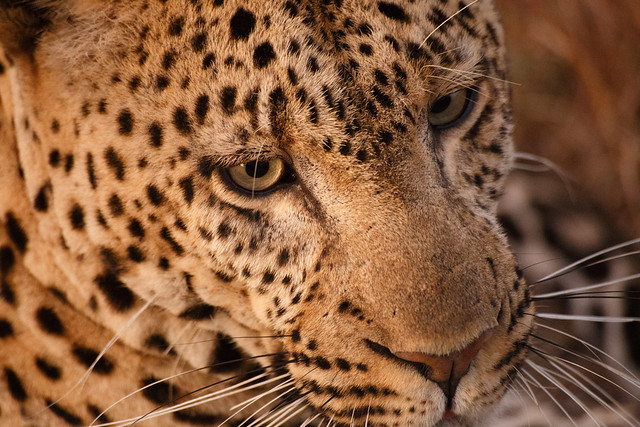
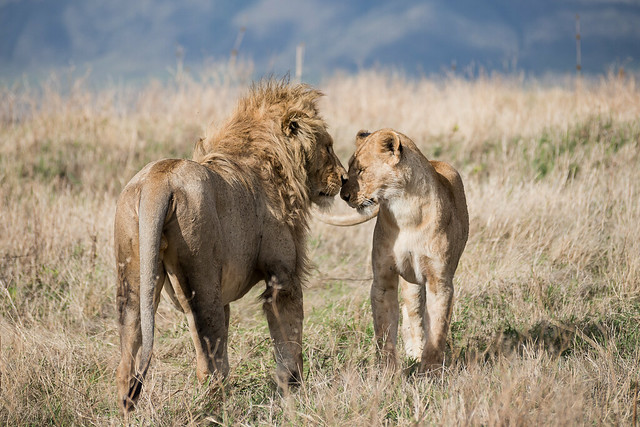
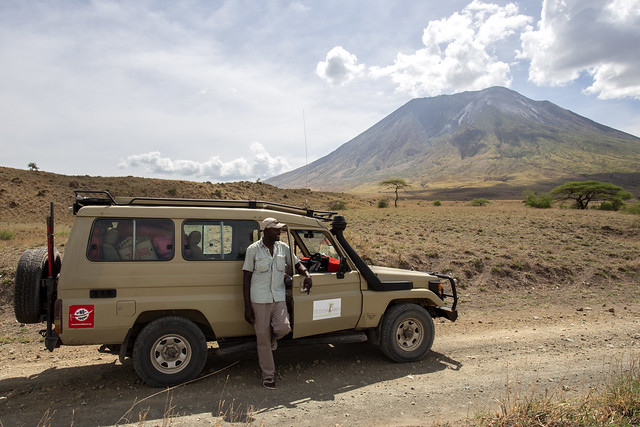
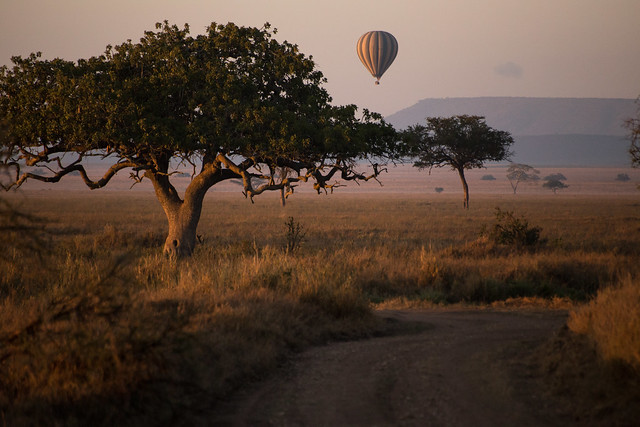

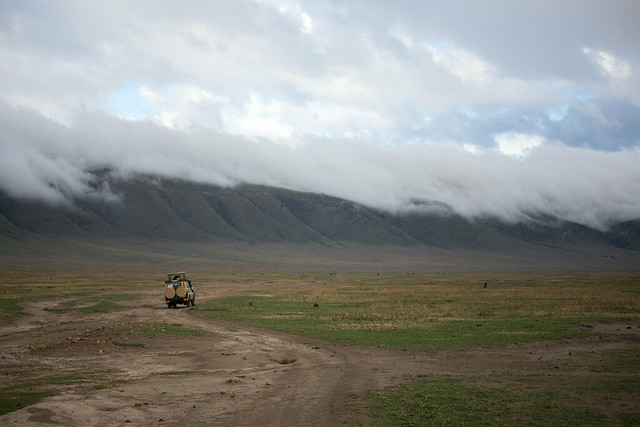

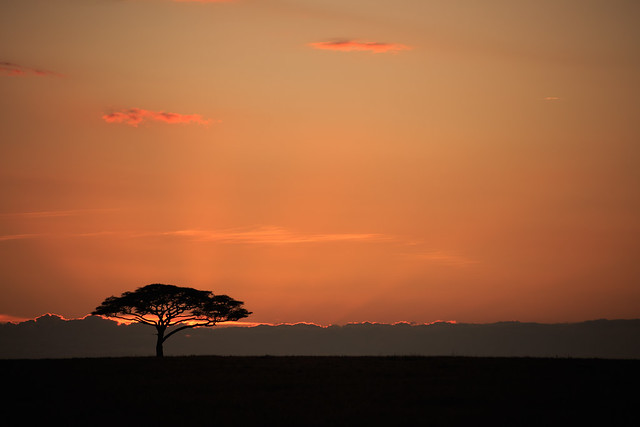
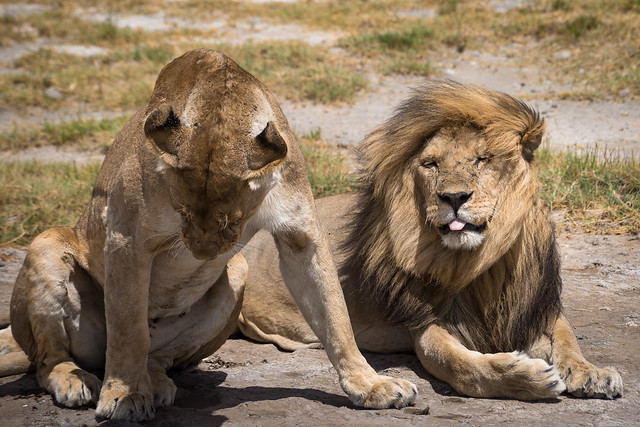


A very thorough guide for safaris … thanks for putting effort into this, I’m heading to Africa in the middle of this year and I will definitely use this!
Thanks Edward! Have an amazing trip! Have you narrowed in on what area you’re most interested in yet?
Stunning pictures! I never considering going on a safari myself. I guess I always sort of associated them with hunting. A photography safari seems like a great way to experience the sights without harming the wildlife. I’d really like to see the flamingos–they’re so cute. Did you feel nervous being so close to the big cats?
Thanks so much for putting in the time to make this comprehensive travel guide. I’ll certainly refer back to it if I ever make it to Africa.
Thanks Angelica! They may have a partial tradition in hunting, but luckily the vast majority now are other types. You also rapidly realize while on a normal safari just how nasty hunting safaris are – a bit like going “hunting” and shooting your neighbors cat. The animals are quite familiar with having the vehicles around which both lets you get super close and also takes some of the unpredictability out of being around major predators. It is actually, believe it or not, the elephants that tend to be the scariest. The big cats periodically do something that gets your heart racing, like in my vlog where one gets up and walks over to the car, or when I had a cheetah cub who almost jumped up on the vehicle – but otherwise, it’s just incredible being that close and seeing their power, apathy and control!
I’m so envious right now. I want a cool cheetah story, too, as long it doesn’t involve me being on the business end of a gaping maw.
I’ve seen a lot of videos about African elephants charging cars and stuff. Can’t even imagine how intimidating *that* would be! Still think I need to add this to my bucket list, though.
Doesn’t happen often, but there’s definitely a bit of risk in it if the guide isn’t paying attention or respecting the animals. It’s one reason I didn’t want to self drive a safari somewhere. Definitely add it to the bucket list!
This blog reminds us to be careful on choosing a good safari for us.
The African animals in your photos look great, Alex! I’m happy that you made this post as informative as possible.
Thanks Agness!
Must Consider Advice for How to Choose a Safari” offers invaluable tips for selecting the perfect safari adventure. From setting a budget to defining your wildlife priorities, this advice ensures you’ll have a tailored and memorable safari experience. A must-read for safari enthusiasts!